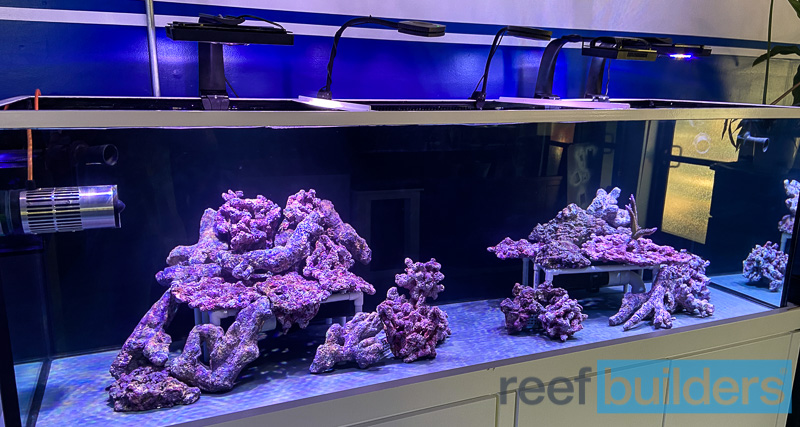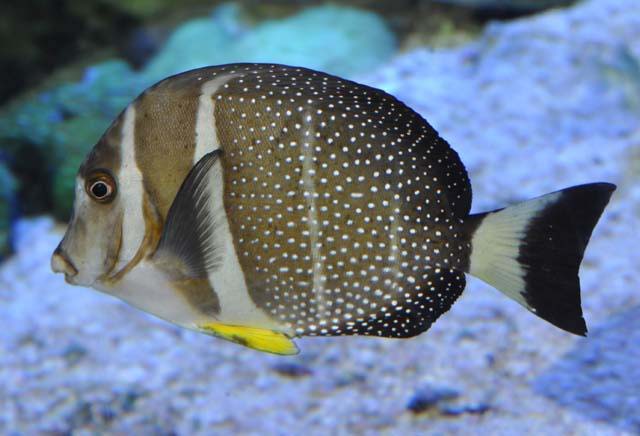The Whitespotted surgeonfish is the kind of tang that is overlooked by many because of its lack of color but is sought out and acclaimed by more seasoned reefkeepers. Also known as the Mustard tang, and occasionally the Jewel tang, Acanthurus guttatus comes from shallow, surging seas in the Indo-Pacific, from Mauritius to Hawaii, and pretty much everywhere in between.
Its favorite habitat is surge zones less than 8m/25′ deep, often free of corals, where algae proliferate in the brightly lit water. There it shoals in numbers from 10 to over 100 or more, grazing both filamentous and calcareous algae, but navigating the strong flow with the ease and precision of a white water rafter.

100 times turnover
Speak to someone who has owned a Whitespotted surgeonfish and they will tell you that no flow is too strong for them, and we have seen them skit in and out of flow from the most powerful wavemakers. 100 times turnover is not too great for these surfers and they crave the high oxygen that comes with it, to the point that one aquatic retail store told us theirs couldn’t have too much oxygen. The white spots on the flank are also believed by some to offer camouflage in the bubble-rich waters they inhabit.
Guttatus can reach some 10” total length but like so many saltwater fish we don’t see them at that size in home aquariums. Buy a cute 3” juvenile instead as they travel and acclimate much better, and can be weaned onto dry and frozen foods. Treat them for worms and then feed them very often every day, so that they maintain an elliptical shape when viewed head-on.
They aren’t aggressive tangs but will run the gauntlet with any resident Zebrasoma or Acanthurus as they will compete for grazing territory, so mix with other tangs with caution. Because of their activity, A.guttatus require tanks of at least 180 gallons when juvenile, and we’ve seen them use every inch of water volume six times that amount. We haven’t seen them maintained in schools outside of public aquariums, so one is best, and they will suit SPS dominant setups and the accompanying bright, white light, chaotic flow, and microalgae.
Despite being abundant in the shallows, the price of A.guttatus helps to keep them exclusive versus other shallow-loving relatives like A.triostegus, and they often sell for between $200 and $600. It is worth making sure that they have been rested, medicated, and are feeding for that kind of investment, and avoid large, dark-colored, recently shipped adults, as we find they just don’t take as well to reef aquarium life.



